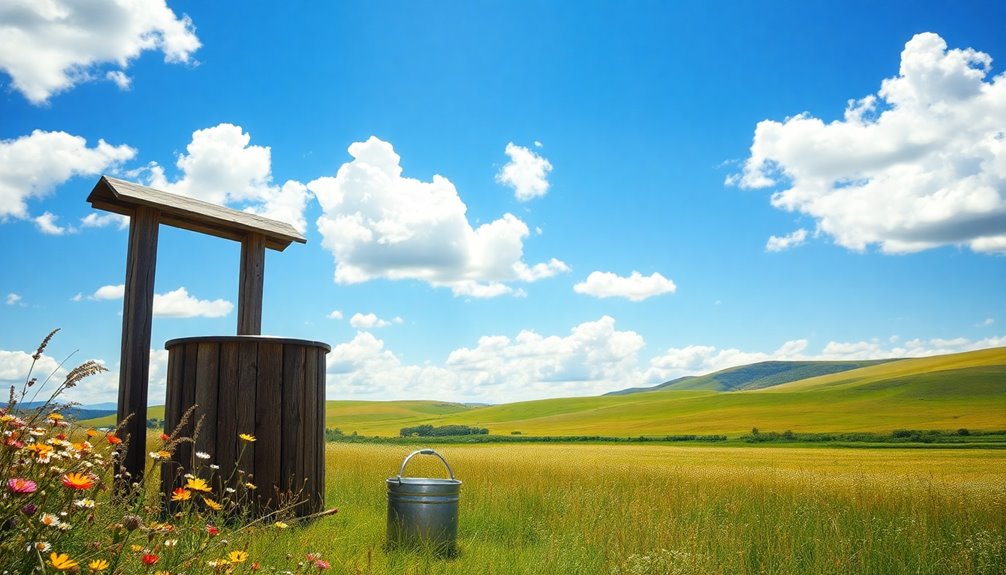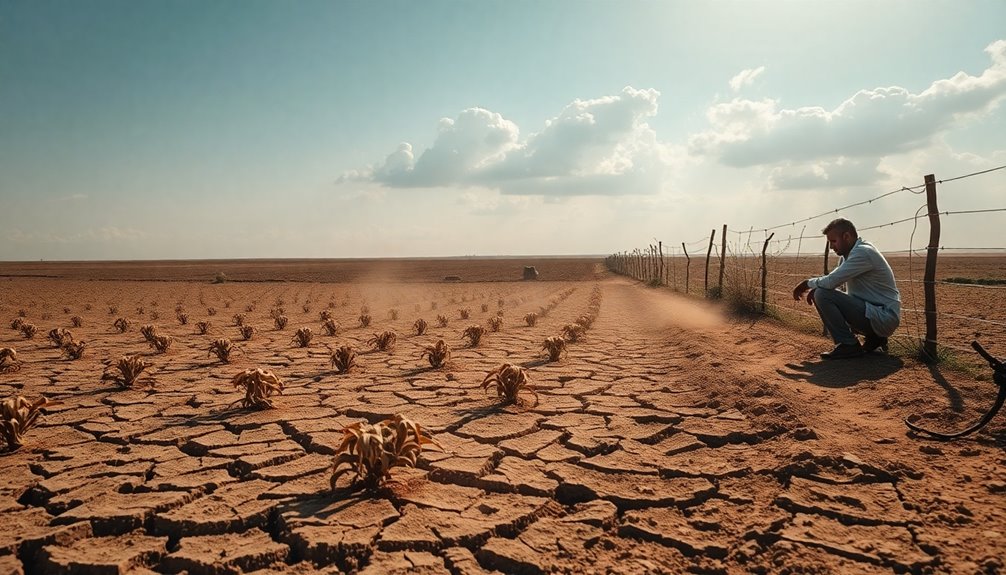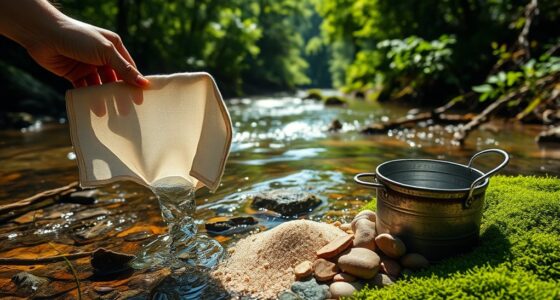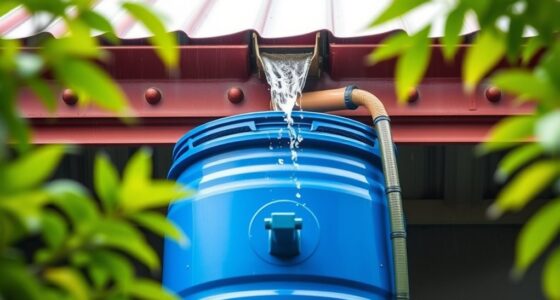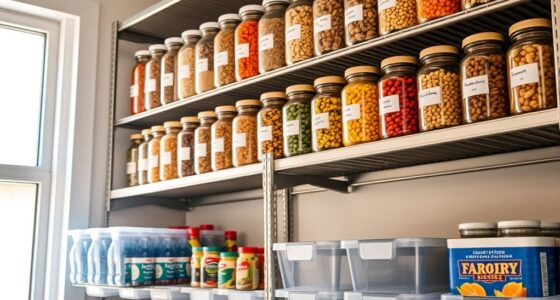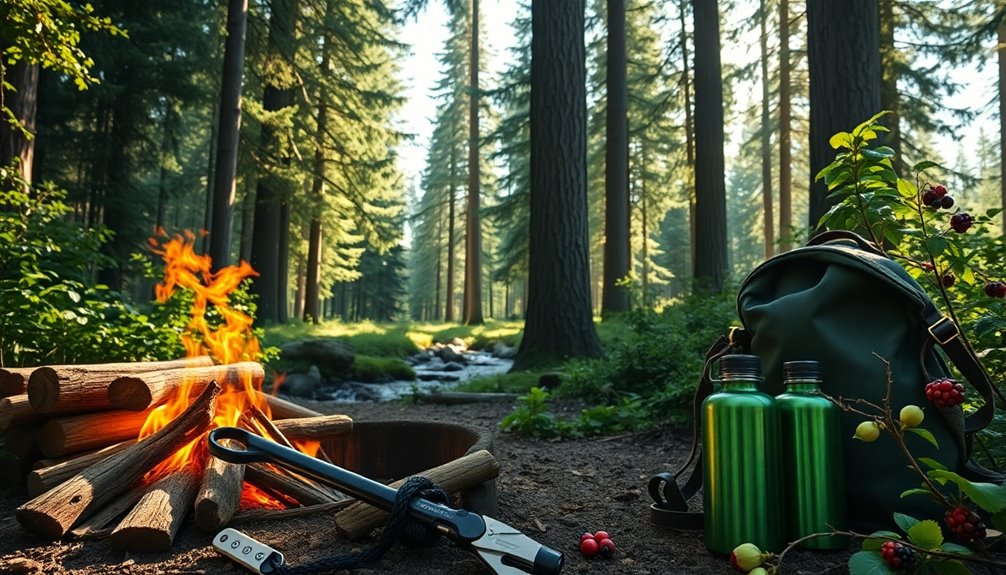To build and maintain your own off-grid water well, start by selecting a suitable site—choose elevated ground away from contaminants and conduct geological tests. You'll need essential equipment like a drill rig, well casing, and an air compressor. Drill to at least 70 feet for cleaner water and consider installing a hand pump for emergencies. Regularly test your water for contaminants and maintain your well components to prevent contamination. Keep records of your water quality tests to track changes over time. With the right approach, you can ensure a reliable water supply and vibrant off-grid living. There's much more to explore on this!
Key Takeaways
- Conduct geological tests to determine water table depth and ensure a yield of at least five gallons per minute for daily needs.
- Use proper equipment, including a drill rig, well casing, and filtration systems, to establish and maintain your well effectively.
- Regularly test water quality for pathogens and contaminants, especially after heavy rainfall or changes in water clarity.
- Maintain a minimum distance of 50 feet from potential contaminants like septic systems to ensure water safety.
- Keep detailed records of maintenance and testing to track water quality changes and ensure long-term well health.
Introduction
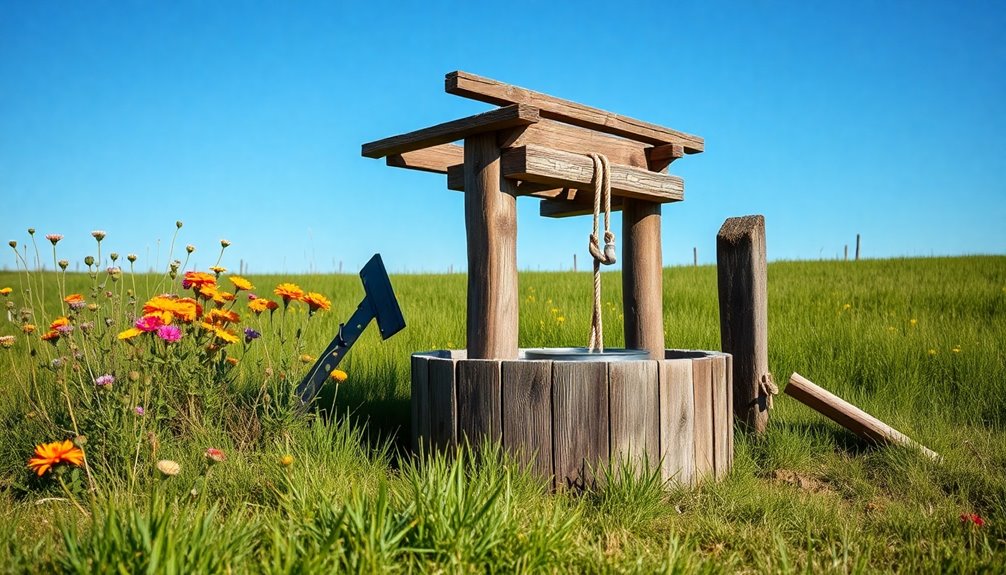
When you decide to live off-grid, having a reliable water source is essential.
Building your own well ensures you have consistent access to water, which is vital for daily living.
Essential for Off-Grid Living
Access to clean water is a fundamental necessity for anyone living off the grid. Securing a reliable water source through well drilling is crucial, especially where public water connections are scarce or costly.
Constructing a well not only provides access to clean drinking water but also supports your health and sustainability in remote locations. Before you start, remember to check local regulations, as legal permits are often required, and site selection should avoid contamination from nearby septic systems.
Regularly testing your well water quality is essential to identify contaminants like pathogens and heavy metals. Additionally, maintaining a proper water filter system, such as ultrafiltration or reverse osmosis, ensures the long-term safety and quality of your well water.
Ensure Reliable Water Access
Reliability in your water source is vital for successful off-grid living. To ensure you have a dependable supply of well water, consider various factors during construction.
Conduct geological tests and secure the necessary permits, keeping your well at least 50 feet from potential contaminants like septic systems. Aim for a yield of at least five gallons per minute (GPM) to meet your daily needs without depleting the source.
Regularly test your water quality for contaminants such as pathogens and heavy metals, and be prepared to implement additional filtration if necessary.
Well Water Sustainability Factors
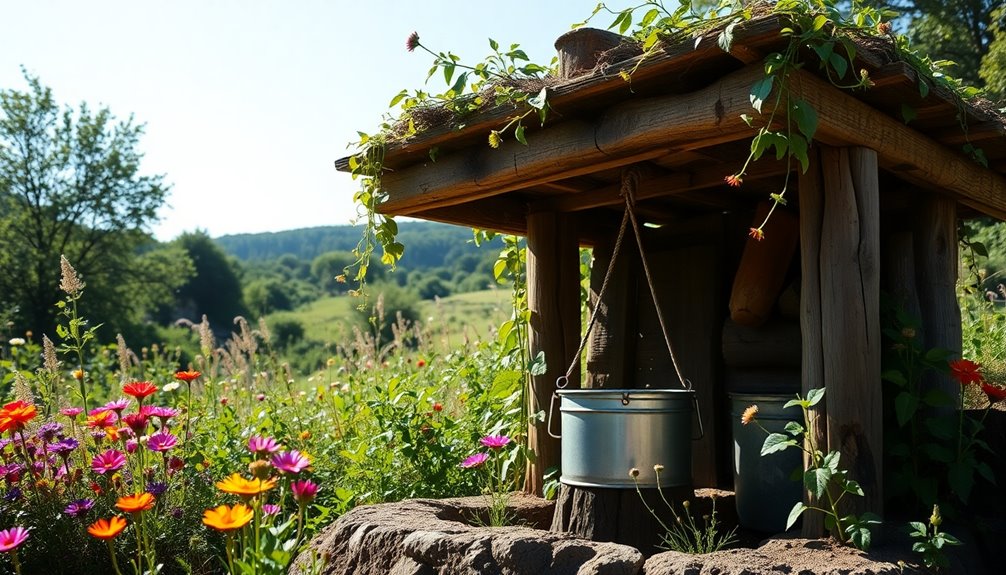
Sustainable well water management hinges on several critical factors that directly impact your health and the environment.
First, regularly test your water quality to detect contaminants like pathogens and heavy metals. The depth of your well affects the water table, with deeper wells often yielding cleaner water, so consider a geological assessment before drilling.
Implement effective filtration systems, such as ultrafiltration or reverse osmosis, to ensure purity, especially in off-grid living situations.
Moreover, regular well maintenance is essential; check your submersible pump and inspect the casing to prevent mechanical failures.
Finally, adhere to local regulations regarding well construction and water usage to help prevent contamination and ensure the long-term sustainability of your water resources.
Essential for Self-Sufficiency
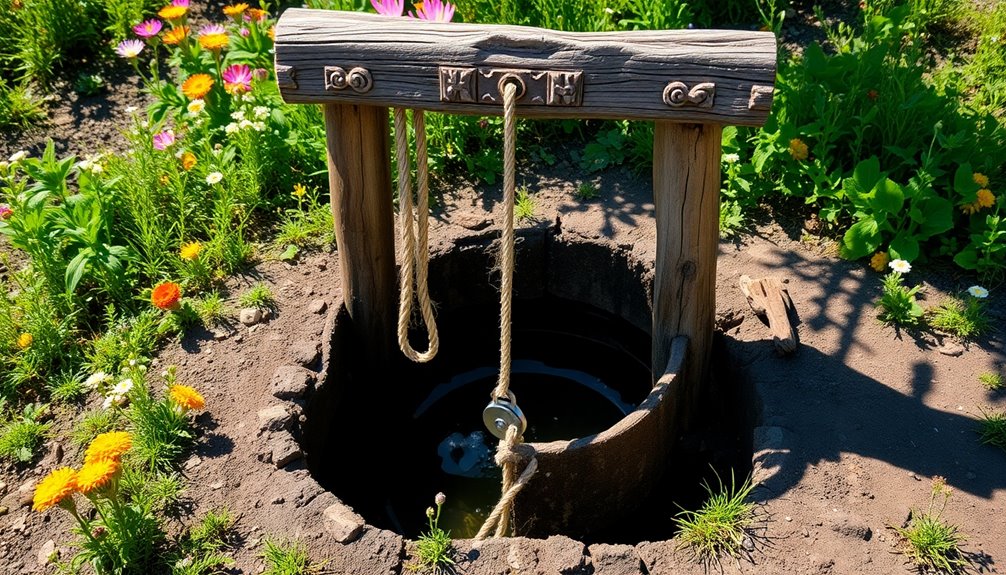
Access to reliable water is critical for your health and security, especially when living off the grid.
In remote areas, water scarcity can pose a significant challenge, making your well an essential resource.
Critical for Health Security
Ensuring a consistent water supply is fundamental for health security and self-sufficiency in off-grid living.
Well water is essential for providing clean drinking water, which directly impacts your health. Regularly testing your water sources for contaminants like pathogens, heavy metals, and pesticides is vital to maintain water quality and safeguard your well-being.
The depth and type of your well play a significant role; deeper drilled wells typically yield cleaner water than shallow options.
To further enhance the purity of well water, consider using effective filtration systems like ultrafiltration or reverse osmosis.
Lastly, understanding local regulations and obtaining necessary permits for well construction is crucial to avoid legal complications and ensure your water sourcing is safe and compliant.
Water Scarcity in Remote Areas
Water scarcity poses a significant challenge in remote areas, directly impacting your ability to live off-grid. Access to reliable water sources often hinges on drilling water wells, where the depth of the well can vary greatly.
In non-arid regions, you might find groundwater as shallow as 20 feet, but in drier areas, it can exceed 70 feet. This variation affects both the feasibility and cost of your well construction.
To ensure your water is safe, select your site carefully and conduct geological surveys to avoid contamination from nearby septic systems. Regular testing for contaminants, like heavy metals and pathogens, is crucial.
Additionally, consider integrating rainwater harvesting or using supplementary sources to combat the effects of water scarcity.
Well Site Selection Criteria
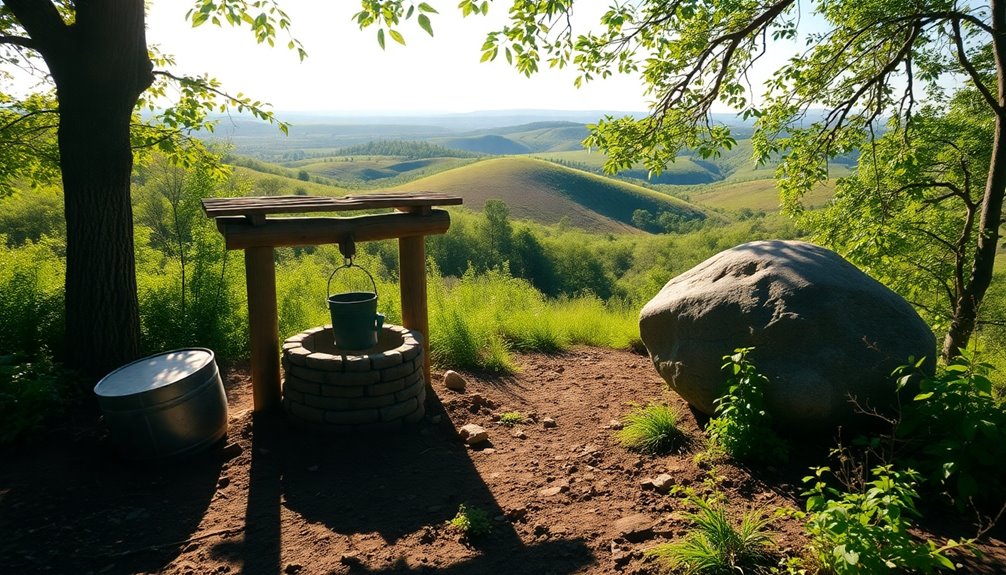
Choosing the right location for your well is essential to ensuring a safe and reliable water source. Start your well site selection by keeping at least 50 feet away from septic systems to reduce contamination risks.
Conduct geological tests to identify the best drilling location, steering clear of potential contaminants like agricultural runoff and industrial waste. Opt for elevated sites with sandy or gravelly soil, which not only facilitates easier drilling but also offers better water quality.
Aim for a depth to the water source exceeding 70 feet; this generally provides cleaner water. Additionally, consider the benefits of utilizing a geothermal heat pump system for efficient heating and cooling once your well is in place, enhancing overall energy sustainability.
Don't forget to consult local authorities about specific regulations and permits, as these can significantly influence your well construction process.
Well Construction Equipment List
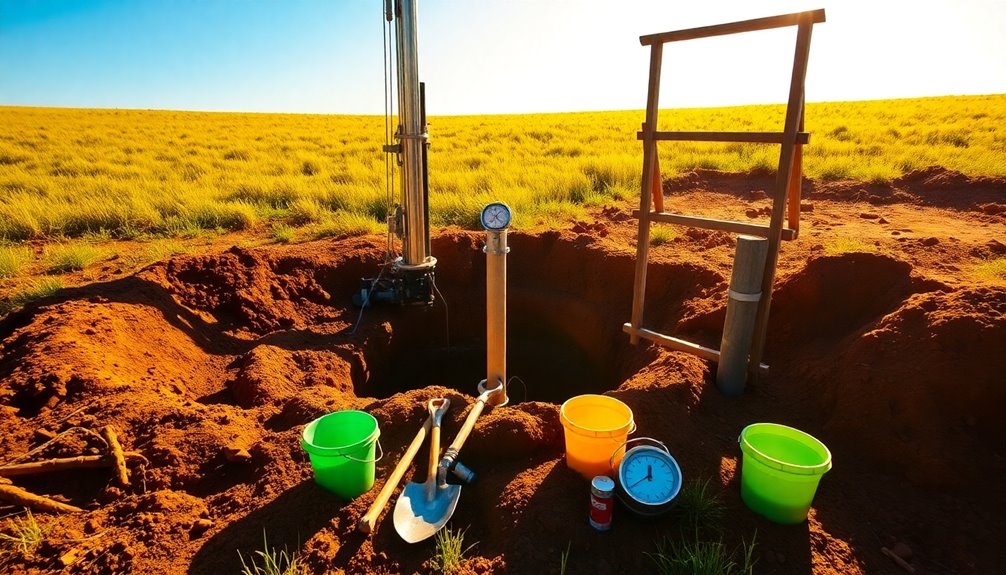
After selecting a suitable site for your well, the next step involves gathering the right equipment for construction.
You'll need a drill rig, or a manual drilling kit if you prefer a hands-on approach, capable of reaching depths of up to 100 feet.
Don't forget the well casing, usually a four-inch diameter pipe, which lines the drilled hole to prevent collapse while allowing water entry.
An air compressor with a minimum of 16 CFM at 90 PSI is essential for flushing debris and cooling your drill bit.
For driven wells, a well point with a hardened tip will help you establish a water source quickly.
Additional tools like shovels, a weighted string for depth measurement, and filtration systems are also crucial for ensuring water quality.
Optimal Drilling Techniques
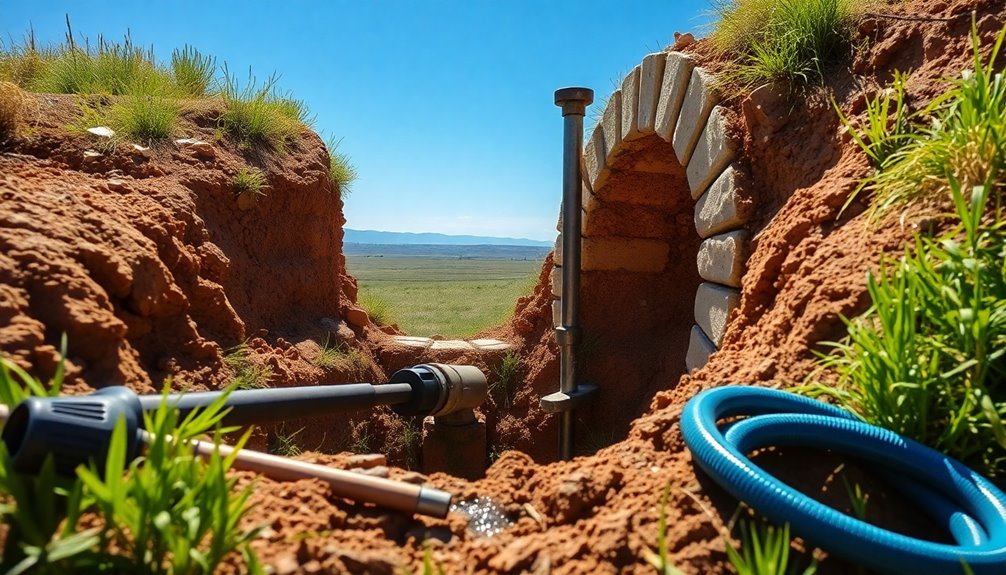
Often, employing optimal drilling techniques can make a significant difference in the success and efficiency of your well installation.
Modern drilling rigs can reach depths over 100 feet, allowing you to access deeper aquifers and achieve better water quality. During drilling, using water helps flush out debris, keeping the process clear and efficient.
If you're looking for quick access to shallow water sources, consider driven wells with a hardened tip for faster penetration. Always conduct geological tests beforehand to understand the aquifer and minimize contamination risks.
Proper casing installation is crucial; include a perforated section for a well screen and surrounding pea gravel to protect your well from surface contaminants. This ensures your well pump operates effectively for years to come.
Water Quality Testing Methods
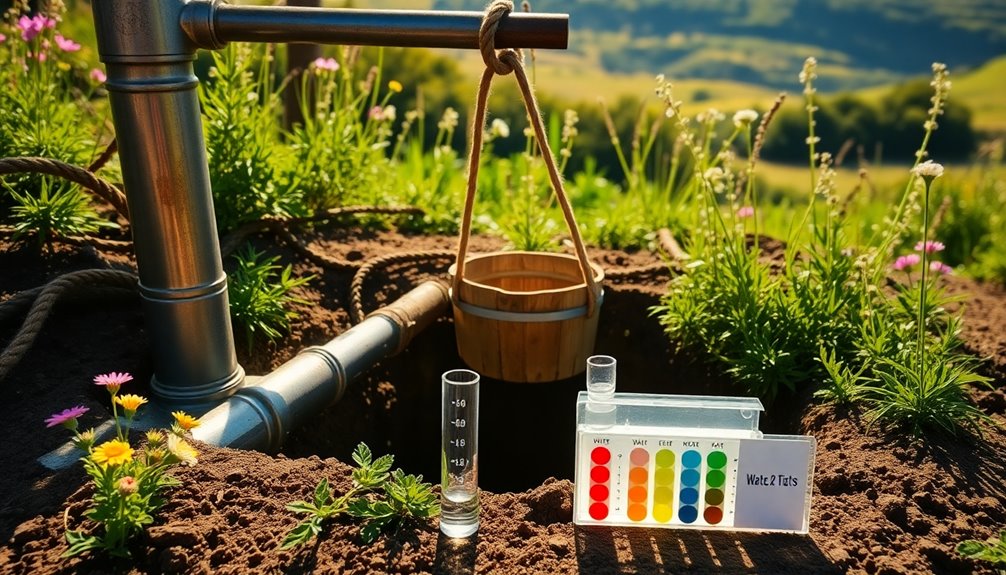
When it comes to water quality, the depth of your well can significantly impact what contaminants may be present.
You should establish a regular maintenance schedule that includes testing to ensure your water remains safe.
Well Depth Impact on Quality
Understanding how well depth impacts water quality is crucial for anyone relying on a well system.
Generally, a deep well accesses cleaner aquifers, providing better water quality due to reduced exposure to surface contaminants. In contrast, shallow wells, typically less than 30 feet deep, are more vulnerable to pathogens and pollutants.
This well depth impact on quality means that investing in a deeper well often yields safer drinking water. Regular water testing is essential, especially for microbial pathogens and heavy metals, to ensure your water remains safe for consumption.
Regular Maintenance Schedule
To ensure your water remains safe and clean, establishing a regular maintenance schedule for water quality testing is key. Conduct tests every 6 to 12 months to check for contaminants like E. coli, heavy metals, and total dissolved solids (TDS).
It's crucial to use certified laboratory testing services, as home kits often miss harmful pathogens. Pay special attention to nitrates and bacteria, particularly after heavy rainfall, which can affect the amount of water quality.
Keep detailed records of your testing to track changes over time, helping you spot potential issues early. Additionally, regularly inspect well components such as casing and pumps to prevent physical contamination, ensuring your well functions optimally long after it's drilled.
Successful Off-Grid Well Projects
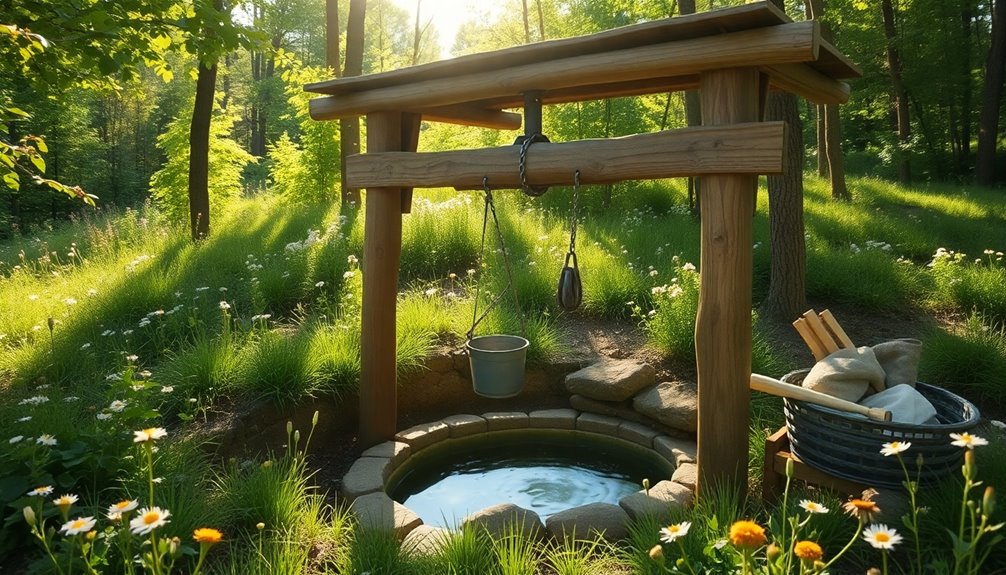
Successful off-grid well projects hinge on strategic planning and execution. Start by selecting the right site and conducting geological testing to find suitable aquifers while following local regulations.
Whether you're drilling deep wells yourself or hiring professionals, keep in mind that costs can exceed $5,000. Aim for a flow rate of at least five gallons per minute to ensure adequate supply.
Installing a hand pump alongside an electric one provides backup during power outages. Prioritize regular water quality testing to keep your drinking water safe, as new wells may produce muddy water initially. Additionally, consider the importance of long-term financial planning for ongoing maintenance and potential repairs.
Lastly, focus on well maintenance with proper casing and gravel packing to prevent contamination, and regularly assess static water levels to monitor performance.
Conclusion
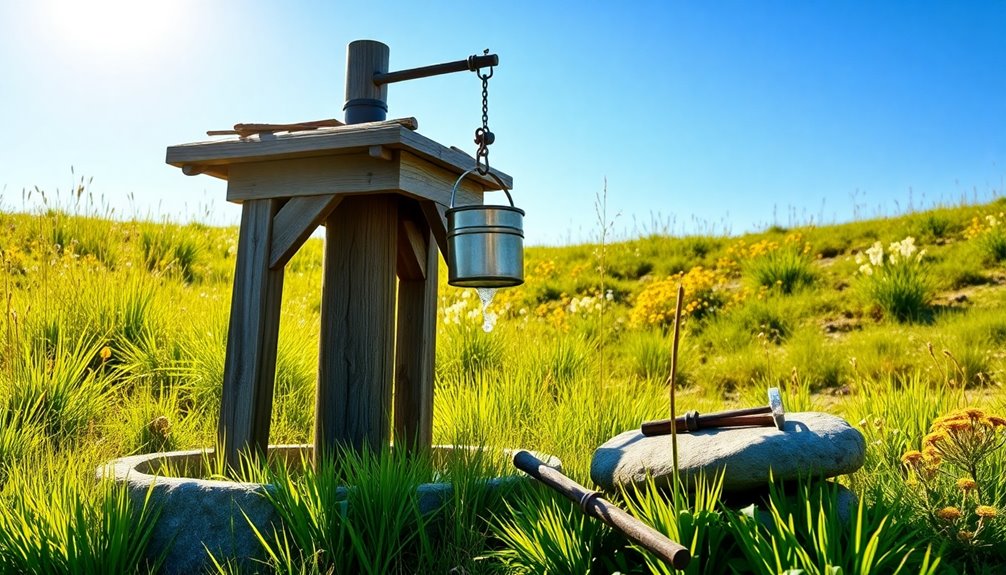
Building and maintaining your own well off-grid not only ensures a dependable water supply but also promotes health and sustainability in your lifestyle.
You'll need to know the essential steps, from obtaining permits to selecting a safe site. Even though the initial setup may seem daunting, the long-term benefits are worth it.
Regular testing for contaminants is crucial to ensure that your well water remains safe for consumption. Remember, much water is wasted if you don't invest in a quality filtration system.
Additionally, incorporating hand pumps gives you access to water even when electricity is down. Ultimately, having your own well means that clean, reliable water is always within reach, enhancing your independence in an off-grid living environment.
Additional Resources
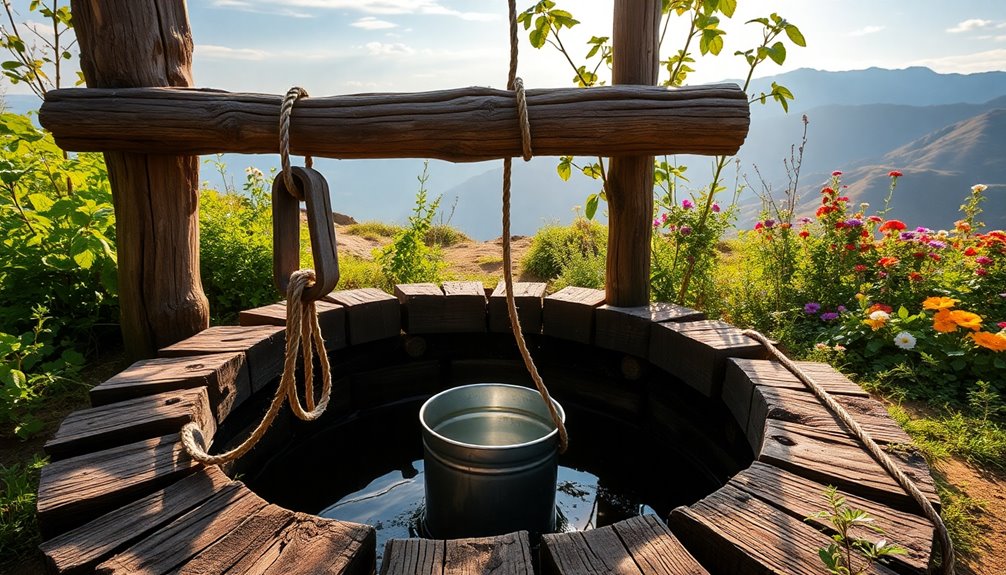
Accessing reliable information is key when you're embarking on the journey of building and maintaining a water well off-grid. Start by contacting your local county extension services; they can provide essential insights on legal requirements and site selection criteria specific to your area.
Don't underestimate the power of community forums and online groups focused on off-grid living. These platforms are invaluable for sharing experiences and troubleshooting common well maintenance challenges.
Regular water quality testing is crucial to ensure your water is safe. You can easily monitor contaminants with home testing kits.
Additionally, consider investing in DIY well drilling kits, which allow you to drill wells up to 100 feet deep, provided you have the right equipment and knowledge.
Frequently Asked Questions
Can I Build My Own Water Well?
Yes, you can build your own water well, but it requires careful planning and knowledge.
You'll need to check local regulations and possibly obtain permits. Consider conducting geological tests to ensure you choose the right location, as improperly placed wells can contaminate groundwater.
You'll also need to rent equipment and may want to invest in a specialized kit.
While DIY drilling can save you money, be prepared for the labor involved in the process.
How Can I Pump Water From My Well Without Electricity?
To pump water from your well without electricity, you can install a hand pump.
These pumps are designed to operate mechanically, allowing you to access groundwater manually. For colder climates, consider drilling a pinhole below the frost line to prevent freezing.
While it requires some physical effort, using a hand pump guarantees a reliable water supply for your gardening and daily needs, ensuring you're not dependent on electrical systems for water access.
What Is the Cheapest Way to Dig a Water Well?
If you're looking for the cheapest way to dig a water well, consider DIY methods.
Renting equipment lets you significantly cut labor costs compared to hiring a contractor. You might opt for a driven well, which can cost between $100 and $500, or even a manual dug well for just a few hundred dollars.
Just remember, while initial costs are low, ongoing maintenance and water quality testing are essential for safe drinking water.
How Long Can a Water Well Run Continuously?
You can typically run a water well continuously for several hours, but it really depends on the well's design, pump capacity, and how quickly the aquifer replenishes.
Electric pumps shouldn't run for more than 30 minutes at a time, unless they're built for continuous use.
If your well yields at least five gallons per minute, you can usually operate it longer without depleting the water supply.
Always monitor the water level to avoid long-term issues.

